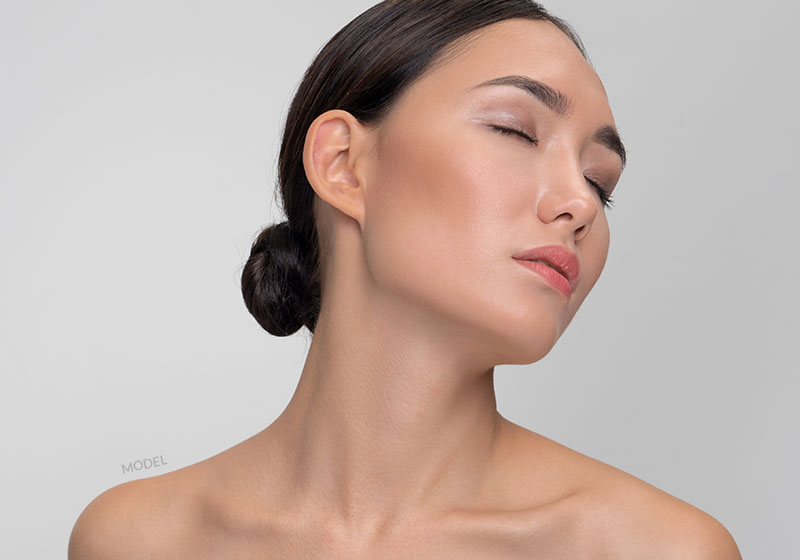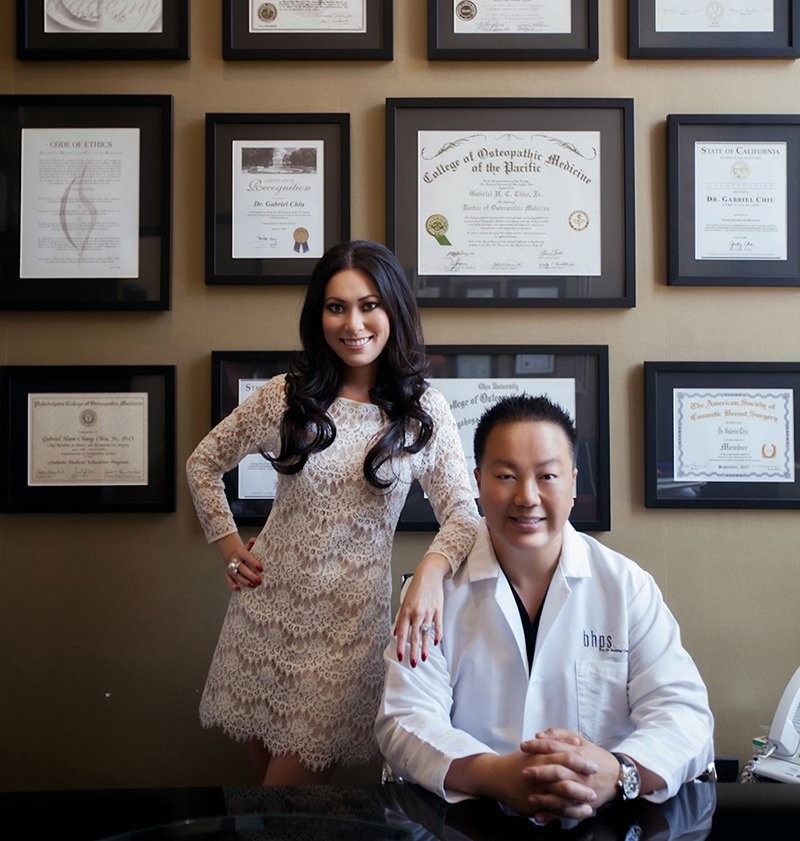Ear Surgery in Beverly Hills, CA
Otoplasty, or ear surgery, is a plastic surgery procedure designed to enhance the appearance of the ears. Ear surgery can reshape the ears, improve their size or protrusion, correct concerns, or correct the appearance of stretched or gauged earlobes. Patients who are missing one or both ears from birth or an injury can have new ears constructed with otoplasty. Dr. Chiu performs ear surgery at his Beverly Hills practice to help enhance patients’ ears and improve their appearance, confidence, and self-image.
What Can Ear Surgery Achieve?
-
Correct Ear Deformities or Injuries
Otoplasty can correct ear deformities or injuries such as lop ear, cupped ear, shell ear, and cauliflower ear. Surgery can help your ears blend in well with your other features and balance your facial profile.
-
Reduce Ear Size or Protrusion
Ears that stick out noticeably from the head or that are too prominent may cause feelings of self-consciousness. Dr. Chiu can perform otoplasty to make your ears smaller and lessen the degree to which they protrude from the side of your head. After surgery, your ears will look more balanced and will no longer draw attention.
-
Improve Earlobes
Some earlobes are naturally large or develop creases or wrinkles. Others may become stretched or develop unsightly holes due to wearing heavy earrings or gauges. Otoplasty can correct these issues and restore a more natural appearance to the earlobes.
-
Rebuild a Missing Ear
Some candidates for ear surgery are missing one or both ears because of an injury or from birth. Missing the outer ears may not affect hearing, but it can draw unwanted attention. Dr. Chiu can use natural tissues and cartilage to reconstruct a missing ear and restore your appearance.
-
Boost Self-Esteem and Confidence
Many individuals experience self-esteem issues, poor self-confidence, social anxiety, or ridicule due to the appearance of their ears. Children are particularly vulnerable to emotional and psychological trauma from the mockery of other children. Otoplasty can enhance your ears and boost your self-esteem and confidence by providing more proportionate ears.
What to Expect During Ear Surgery Recovery
-
Immediately After
Soft surgical dressings will be applied to each ear to promote healing and support the tissues while they heal. Patients should avoid sleeping on their sides and may relieve any mild discomfort with pain medications. A temporary headband may be recommended for regular wear to hold the ears in their desired position.
-
1 Week
The stitches will dissolve or be removed. Adults can usually return to work after five days. Children can return to school after one week if they are careful about playground activity. If applicable, the headband should still be worn. Patients should continue to avoid sleeping on their sides.
-
2 to 3 Weeks
Patients can stop wearing the headband but should avoid any activity that could bend the ears, including sleeping on their sides.
-
4 to 6 Weeks
Patients should be feeling back to normal, able to resume all normal activities, and able to fully enjoy their results.
Why choose Dr. Chiu?
Dr. Gabriel Chiu possesses exceptional skill and experience with ear surgery, and people in Beverly Hills and Los Angeles seek him for his surgical precision, masterful techniques, and remarkable ability to consistently provide natural-looking results. He utilizes his thorough understanding of facial anatomy and aesthetics to develop a customized surgical plan to meet (and often exceed) the needs and expectations of his patients.
Dr. Chiu regularly performs successful ear surgeries, and he has the unique skills and expertise to deliver results that patients appreciate. Otoplasty provides patients with satisfactory results and frequently gives patients a renewed sense of confidence.
Frequently Asked Questions
Is ear surgery covered by medical insurance?
Insurance coverage may be available for your ear surgery depending on your reasons for undergoing the procedure. Insurance will not cover ear surgery that is performed for cosmetic reasons, but it may partially or wholly reimburse ear surgery that is conducted to correct injuries or birth defects. If you are considering ear surgery, check with your insurance provider to learn what coverage options may be available for you.
Who is an ideal candidate for ear surgery?
Ideal candidates for ear surgery are healthy individuals whose ears have reached their full size and are finished growing, which usually occurs around age five or six. While adults can have excellent results from otoplasty, adult ears have firm cartilage that cannot be molded as easily as children’s ears, which have softer and more pliable cartilage. The best candidates are younger children because their ears will be the easiest to reshape, and they will likely experience the most significant psychological benefits from cosmetic improvement.
Will ear surgery affect my hearing?
Otoplasty manipulates only the tissues of the outer ear. Therefore, it does not affect your hearing at all.
Will I have scars?
Otoplasty leaves only a thin white scar behind the ear. This scar is hidden within the natural creases of the ear and will not be visible.
What risks are involved?
There are few risks associated with otoplasty. Rarely, patients may develop a blood clot or infection. A blood clot may dissolve on its own or be resolved with a needle. An infection can be treated with antibiotics or, in even rarer cases, surgery.
What results can I expect?
Ear surgery enhances the appearance of the ears so they look natural, attractive, and balanced with your facial features, face shape, and head shape. Patients are typically thrilled with the results of ear surgery.
How long do the results last?
The results of ear surgery are generally permanent, which means that patients can enjoy their results for the rest of their lives.




